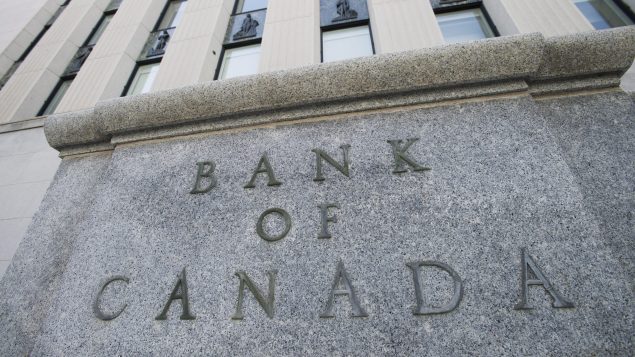The Bank of Canada left its key interest rate unchanged today as it tries to weigh the impact of the slowing global economy and trade wars on the Canadian economy.
The central bank is holding its benchmark rate at 1.75 per cent in a decision that follows a quarter-point increase at its previous policy meeting in October. The bank rate, the rate that banks have to pay to borrow money from Bank of Canada, is correspondingly 2 per cent and the deposit rate is 1.5 per cent.
The bank’s benchmark rate directly affects the interest rates that Canadian consumers get from their retail banks on their mortgages, loans or on their savings deposits. When the central bank increases its interest rate, it makes borrowing more expensive — but it’s good news for savers.
“The global economic expansion is moderating largely as expected, but signs are emerging that trade conflicts are weighing more heavily on global demand,” Bank of Canada said in a press release. “Recent encouraging developments at the G20 meetings are a reminder that there are upside as well as downside risks around trade policy.”
Growth in major advanced economies has slowed, although activity in the United States remains above potential, the bank added.
The bank has been on a gradual rate-hiking path for more than a year thanks to a strengthening economy and has already raised the benchmark five times since the summer of 2017.
Keeping an eye on oil prices

Alberta Premier Rachel Notley speaks during an announcement of a mandatory cut in oil production to deal with a price crisis that is costing Canada an estimated $80 million a day, in Edmonton on Sunday, Dec. 2, 2018. (Jason Franson/THE CANADIAN PRESS)
However, one of the wildcards the bank will be keeping an eye on as it considers the timing of its next rate hike is the volatility in oil prices.
“Oil prices have fallen sharply since the October Monetary Policy Report (MPR), reflecting a combination of geopolitical developments, uncertainty about global growth prospects, and expansion of U.S. shale oil production,” the bank said.
Benchmarks for western Canadian oil – both heavy and, more recently, light – have been pulled down even further by transportation constraints and a buildup of inventories, the bank said.
This has forced the government of Alberta to order an 8.7-per-cent cut in oil production, to mitigate the oil glut.
“In light of these developments and associated cutbacks in production, activity in Canada’s energy sector will likely be materially weaker than expected,” the bank said.
It also said recent data show that the economy has less momentum heading into the final quarter of 2018 related to factors such as a drop in business investment that the bank largely connects to trade uncertainty last summer.
The bank also notes it will be watching for positive developments such as signs the economy can still expand without stoking inflation.
The bank will next meet in January to reassess its rate policy. The Canadian dollar plunged more than half a cent when the decision came out, dipping below the 75 cent US level for the first time since June.
With files from The Canadian Press and CBC News







For reasons beyond our control, and for an undetermined period of time, our comment section is now closed. However, our social networks remain open to your contributions.